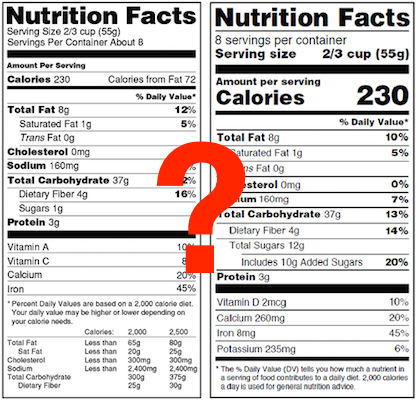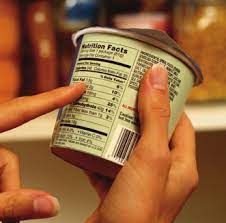How to Grow Your Food Business
Experiencing growing pains with your food business? Symptoms include: not enough time in the day, not making enough product to meet demand, and increasing sales along with increasing expenses. This is food business growth. And it’s quite the roller coaster.
When you’re growing your food business, it’s important to chart a course for success. That means identifying opportunities in sales, staffing, marketing, distribution, and, of course, space. After all, no production space means no room to make new product to sell.
Increasing your production is daunting - it can make or break your business. In this article, we’ll let teach you seven industry tips to make the transition to increased production a success.
1. Evaluate Where You Are, Identify Your Production Goals
Making the decision to move to a new space can be daunting, exciting, and necessary. Before you decide, identify any improvements in your production cycle. Could you rent more kitchen time, add another production day to the week? Will this add to your sleepless nights trying to make enough product to meet demand? If so, it may be time to move onward and upward.
Once you make the decision, identify the ideal scenario that would produce enough product to meet demand - and then some. This will help you determine whether your own dedicated kitchen space will work or if you need a co-packer. Generally, these two scenarios are drastically different production amounts.
2. Your Own Space = Increased Overhead & Equipment
Let’s get right to the point: kitchen space is expensive. It’s even more expensive if you’re renovating a commercial space to have a kitchen in it. Not only do you have the cost of the lease, but you have the fit-up expense for the space, the extra equipment, insurance...the list goes on. It’s a significant investment of at least $20,000 that you should be prepared to make.
Cost aside, producing in your own space has some great benefits including flexibility: you can produce closer to demand, easily experiment with new products, and produce on your own schedule. You can even have your own little retail store! Make sure to weigh the pros and cons of going in this direction.
3. Co-Packing = Smaller Margins, Higher Volume, Greater Focus on Sales
Remember that time when you had to factor in labor when making your products at home or in a kitchen rental? Labor is no longer free because a co-packer will add this back in. Co-packers typically price three ways: by the day, by the unit, or just a flat labor rate where you source packaging and ingredients. They may also charge for storage, receiving your shipments, using specialized equipment, etc.
Transitioning to co-packing can often cause major sticker shock for food producers. But, if you priced labor (and depreciating capital expenses) in from the beginning, the shock shouldn’t be nearly as bad. The positive side of co-packing is that having someone else make your product (especially once your relationship is strong and you're on the same page) allows you and your team to focus on sales and marketing, the foundation of your company’s growth. You’ll also be able to scale your company to thousands of units produced in just a matter of days. It’s quite the weight lifted!
To learn more about co-packing and co-packing resources, check out our article on How and When To Find a Co-Packer (and other resources on our co-packing blog post).
4. Increased Inventory = Increased Cash Demands
We just mentioned a large production capacity increase in the last tip. That means more inventory - raw materials, packaging, as well as finished goods. And that means more capital. Growth requires investment, but for many of us parting with the contents of our bank accounts is hard.
So think about it this way: if you invest $8,000 to produce 5,000 units (that’s $1.60/unit), and you can sell those units for, let’s say, $4.50 to a retailer, since you’ve already paid for the product (assuming you used a co-packer), you have the potential to generate $22,500 in sales. Now, you just wait for the cash to roll in. When you’re growing out of control, you have to ask yourself: Would you invest $8,000 to make $22,500 in sales and $14,500 in gross profit? You betcha.
5. Decide the Depth and Breadth of Your Product Line
We see a lot of smaller food businesses producing 10-15 products or even more. Usually there is no method to the madness. They're just making lots of things regardless of how well they sell, and inevitably some products simply don't sell as much as others. When you scale production (and hopefully sales along with it), the scaling will compound any discrepancy in sales. Products that don’t sell are money pits and time sinks. If you're trying to grow, the name of the game is focus, focus focus.
This is the time to evaluate which products you will nix (which we really recommend earlier than later!). Mad customers? You could let them know there simply weren’t enough raving fans to support the product. Your co-packer (and your bottom line) will appreciate your product line focus. Or if you're in your own space, your focus on a product line means less equipment to purchase, fewer ingredients, and less inventory to keep track of. You sacrifice some short term sales for long term growth, along with sanity and freed-up time.
6. Start to Think About a Team & Mentors
These last two tips are not specific to the food sector, but they’re key to scaling your food business to take over the world. When you’re growing, you're going to have to stop doing everything yourself. It’s called super hero syndrome and we’re all guilty of it.
Start to think about what position you could create and hire for that would help you devote more of your time to working on your business and not in your business. Maybe it’s a bookkeeper, a demo support person, or a social media specialist.
Another person we’d recommend thinking about is a mentor. That person can be in the food industry or not. You want someone you can objectively bounce business issues and success off of. A couple free resources that help out are Small Business Development Centers and SCORE. Or maybe there's someone you've worked with before and admire. In order for their feedback to be helpful you have to trust and respect them. Also don't hesitate to cold call or email another business owner who's a few steps ahead of you; we've all been helped along the way and would gladly pay it forward given the right opportunity.
7. Take Time for Yourself & Your Family
Time away from your business is mission critical to your mental health. Growing a business is straight-up hard. Sometimes you feel like you’re in the middle of an ocean trying to paddle to land. And sometimes you celebrate great success. Either way it's all consuming if you let it take over you. So, as you chart your course through tremendous growth, please make sure you spend time outside of your business with your family and your friends. It will make you a happier person and a better business owner having a strong support system and help avoid that dreaded burnout.
Conclusion:
This list is certainly not exhaustive, but it gives you some tips to think about as you decide where to produce your product next. In our experience, it’s essential to surround yourself with a great team, implement systems and cost controls like inventory management (you’ll need it!), and make sure you’re well-capitalized.
Oh yeah, and have fun doing it!
Have your own tips? Let us know in the comments below!






